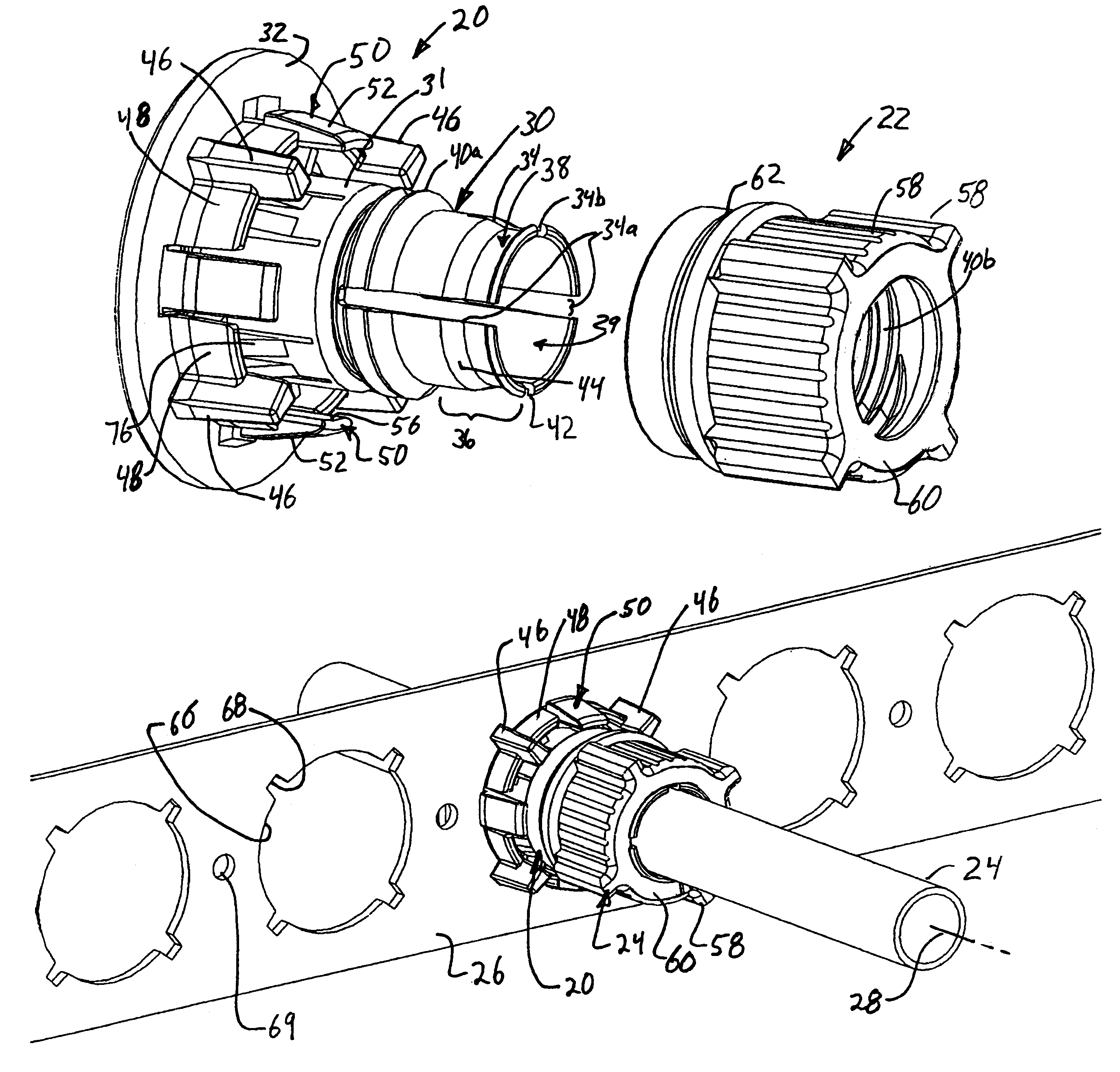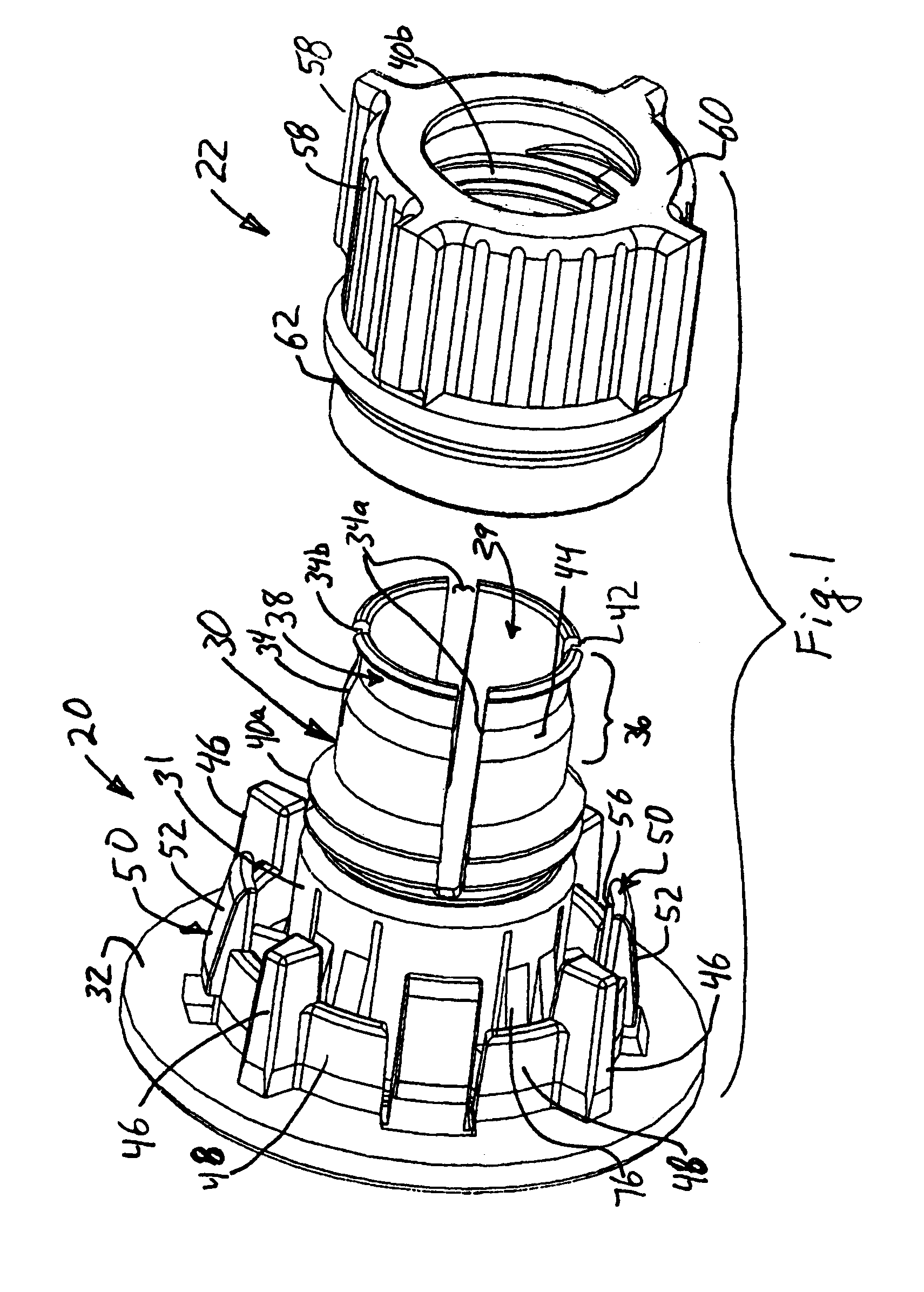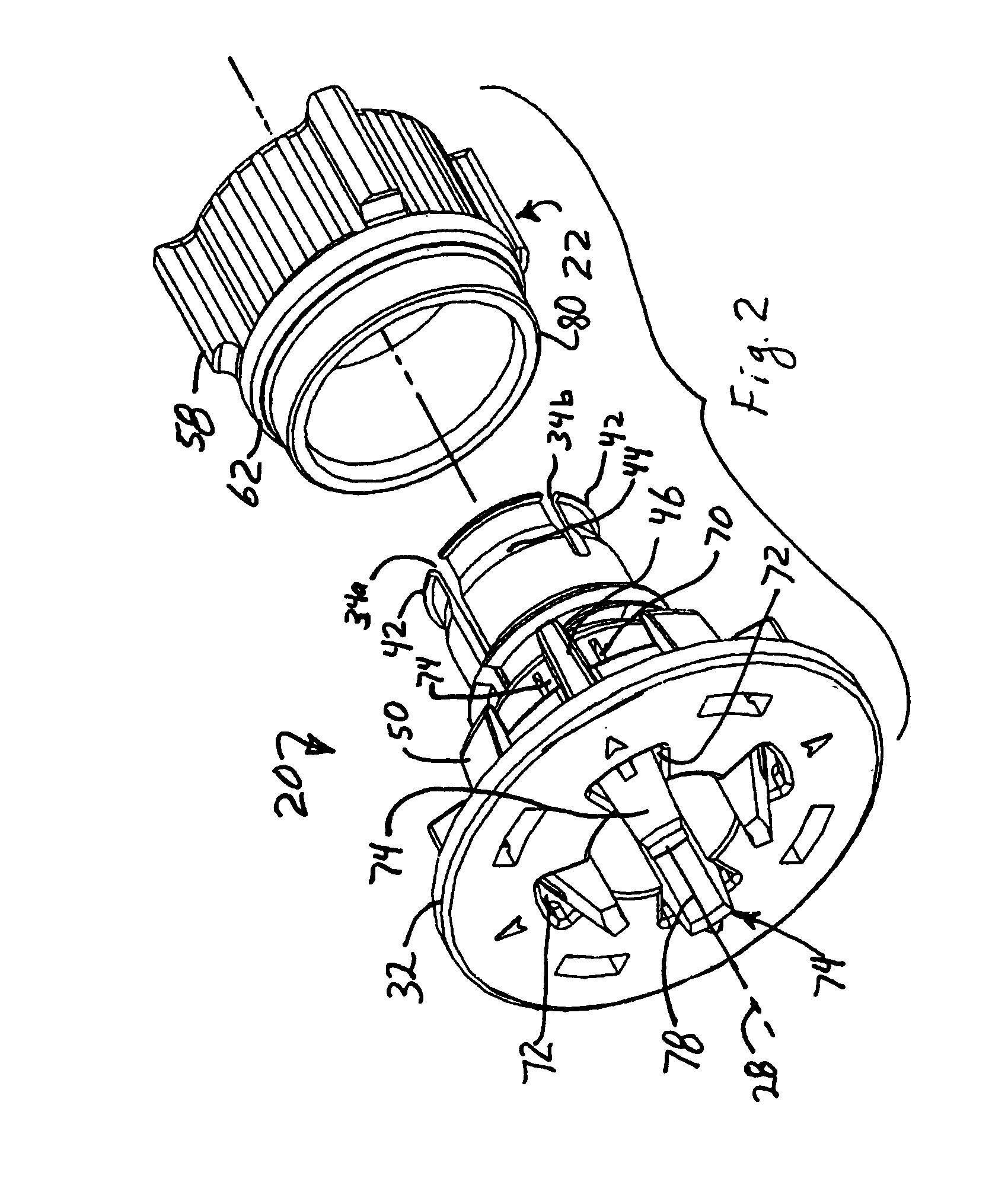Anti-rotation pipe locator and holder
a locator and anti-rotation technology, applied in the direction of branching pipes, mechanical devices, adjustable joints, etc., can solve the problems of reducing affecting the service life of the locator, and unable to adequately restrain the movement along the length of the pipe, so as to achieve wide and stable support and make the separation difficult
- Summary
- Abstract
- Description
- Claims
- Application Information
AI Technical Summary
Benefits of technology
Problems solved by technology
Method used
Image
Examples
Embodiment Construction
[0029]Referring to FIGS. 1-6, and primarily to FIGS. 1 and 4, an tubular insert 20 cooperates with a collar 22 to fasten pipe 24 to a support member, referred to herein as strap 26 that is in turn fastened to a building (not shown). The tubular insert 20 and pipe 24 preferably have a common longitudinal axis 28 when assembled, with the tubular insert having a passage 29 configured to allow passage of the pipe 24. The passage 29 is preferably of the same shape as the pipe and slightly larger than the pipe. Thus, for a cylindrical pipe 24 the passage 29 is also preferably cylindrical, but the shape of passageway 29 could be different, such as square, hexagonal, octagonal or other multi-sided cross-sectional shapes.
[0030]The tubular insert 20 has a tubular base 31 and a tubular skirt 30 extending along and encircling the longitudinal axis 28. Flange 32 is connected to the base 31 and generally perpendicular to the base 31 and skirt 30. The flange abuts strap 26 during use. The flange 3...
PUM
 Login to View More
Login to View More Abstract
Description
Claims
Application Information
 Login to View More
Login to View More - R&D
- Intellectual Property
- Life Sciences
- Materials
- Tech Scout
- Unparalleled Data Quality
- Higher Quality Content
- 60% Fewer Hallucinations
Browse by: Latest US Patents, China's latest patents, Technical Efficacy Thesaurus, Application Domain, Technology Topic, Popular Technical Reports.
© 2025 PatSnap. All rights reserved.Legal|Privacy policy|Modern Slavery Act Transparency Statement|Sitemap|About US| Contact US: help@patsnap.com



